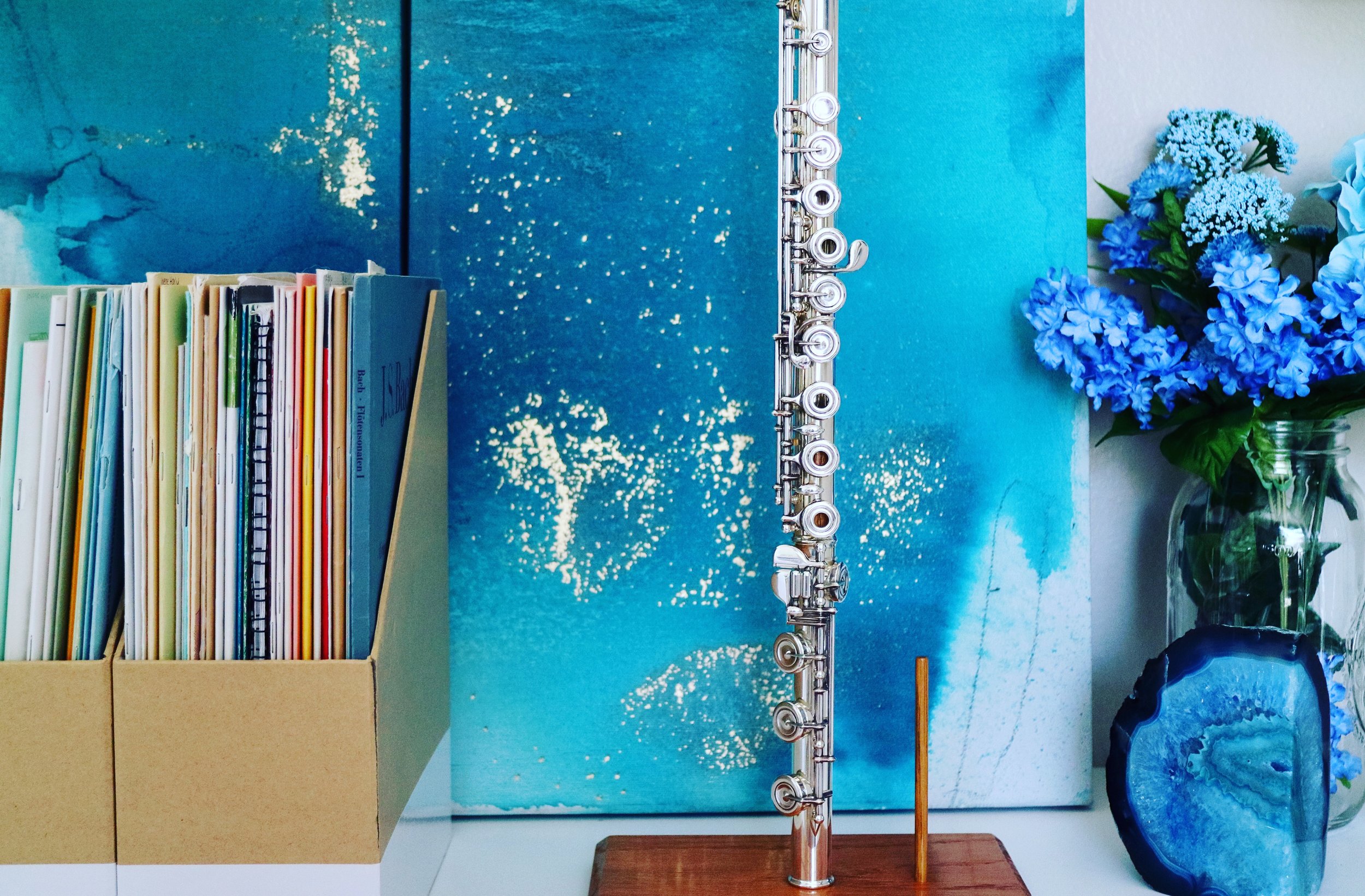Better Low Notes: Optimizing Air, Space + Lips
When it comes to low notes, some players have a natural ease while others struggle to find consistency. I frequently spend a good deal of practice time problem-solving in the low register, and have found the following ideas to be the most useful for me and my students.
Breath Is The First Priority:
Keeping A Low Center of Gravity in the Body
I discovered this phrase in an article by Helen Bledsoe filled with ideas on playing low notes. In the article, she mentions an idea from Robert Dick: "Drop the belly. A trick from brass players, it keeps the center of gravity low."
Releasing excess tension in the upper body (arm structure and abdomen) allows the center of gravity to shift towards the body's natural middle- the hips joints! A body in balance is supported by the floor, with the the upper half balancing on top of the legs. From here, the torso is free to enjoy the movements of breathing - Our inhalations can be efficient and we can maintain spaciousness to support the airstream.
Are the arms overworking? Release the weight of the arms, allow the elbows to hang, and keep the hands and fingers light: There's no need to squeeze the keys if your flute is functioning properly without leaks!
- All-in-all, squeezing is a sign of effort that can get in the way of breathing, and we can redistributed this effort in a more useful way! Try singing and playing to encourage and open and well-supported airstream and notice the resultant feeling.
SECOND: JAW FREEDOM + SPACE WITHIN THE MOUTH
How Do I Drop The Jaw?
In addition to releasing tension in the upper body, releasing excess tension in the jaw and face is important, too! If the direction to "drop the jaw" involves forcing or pulling downward, you may begin to feel discomfort over time, as well as excess tension in the face. Consider the feeling of releasing or softening the face.
Do you clench your jaw as a habit? As an emotional response? Have a look at the muscles that move the jaw and lips! The masseter is a strong muscle used in chewing that helps us close the jaw, and it's attached to the cheek bones! Consider a feeling of softness surrounding the cheeks to encourage a more natural, neutral jaw feeling.
The tongue can lie low within the mouth to encourage a feeling of spaciousness. Imagine a warm, window-fogging airstream gliding across the floor of the mouth. What is it like to play with an "ooooh" vowel shape? What about "awwww?"
Finally, Embouchure:
Mushing the Lips Forward + Freeing the Lower Lip
Releasing and softening the face forward can also encourage us to release the embouchure forward, especially the corners. (We can get away with playing higher notes with corners that are pulled back, but the low register is especially difficult to play this way!) What is it like to release the face and the lips toward the lip plate?
Low notes need the embouchure to be available in order to be flexible, which means the lower lip also needs to be free and available. Use a mirror to experiment with a lower position if the lip plate is covering too much of the lower lip.
With greater possibility for embouchure flexibility, we have more possibilities to uncover the optimal air angle needed for low notes. What is it like to roll out? What is it like to aim down toward the elbow? Does my airstream aim left, right, or straight? Is the aperture focusing the sound?
In Conclusion
The best way to get better at low notes is work on them daily with a sense of curiosity! Improving should involve a spirit of experimentation and trial and error, so be patient. Use a mirror, try out different ideas, and be kind to yourself if you make messy sounds, they're just information! Every day is a chance to become a little bit better than yesterday, no matter where you are!
recommended exercises:
#PRACTICEROOMREVELATIONS
Instagram: @joleneflute
Facebook.com/PracticeRoomRevelations








![The Priorities of Good Sound for Flute & Piccolo [+ Free Download]](https://images.squarespace-cdn.com/content/v1/5698446a89a60aae9b0dd518/1524968904509-OQ60PWPH10XLHCE2IED5/IMG_8341.PNG)